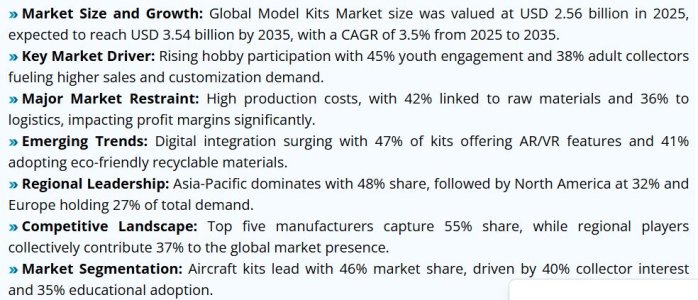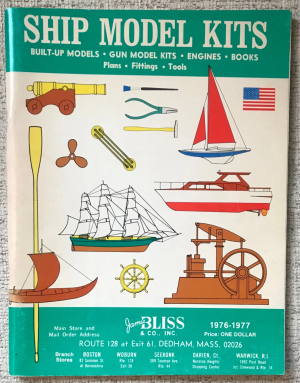Ship Model Market Outlook
The global ship model market size was valued at approximately USD 1.2 billion in 2023 and is projected to reach around USD 2.4 billion by 2032, growing at a Compound Annual Growth Rate of 7.6% during the forecast period. One of the primary growth factors driving this market is the increasing interest and investment in maritime history and nautical hobbies across various demographics. The appreciation for maritime craftsmanship and the rising disposable incomes in emerging economies further contribute to the market's expansion.
The ship model market is witnessing robust growth due to several factors, one of which is the surge in the number of hobbyists and collectors. These enthusiasts often seek out high-quality, detailed models to add to their collections, driving demand for both static and dynamic models. Moreover, the increasing availability of DIY model kits and online tutorials has made ship modeling more accessible, encouraging more individuals to take up this hobby. The trend is particularly noticeable in regions with a rich maritime history, where interest in ship models serves as a cultural homage to the past.
Another notable growth driver is the educational sector's growing interest in utilizing ship models for teaching purposes. Educational institutions, including schools, colleges, and museums, are increasingly incorporating ship models into their curriculum and exhibits. These models serve as valuable teaching aids, providing a tangible representation of maritime technology and history. They help students and museum visitors better understand the complexity and evolution of nautical engineering, thereby fostering a deeper appreciation for maritime heritage.
The advent of advanced manufacturing technologies, such as 3D printing, has also significantly influenced the ship model market. These technologies have made it easier and more cost-effective to produce highly detailed and accurate ship models. As a result, manufacturers can offer a broader range of models at different price points, catering to both high-end collectors and casual hobbyists. This technological advancement not only improves product quality but also enhances the overall consumer experience, further driving market growth.
In the realm of ship modeling, the concept of a Toy Model has gained traction as a unique segment catering to beginners. Unlike traditional ship models that focus on historical accuracy and intricate detailing, Toy Models are designed to be more approachable and engaging for novices. These models often feature simplified designs and vibrant colors, making them appealing to children and those new to the hobby. The introduction of Toy Models has helped broaden the market's appeal, encouraging a new generation of enthusiasts to explore the world of ship modeling. By offering an entry point that is both fun and educational, Toy Models play a crucial role in sustaining interest in maritime history and model building.
Regionally, the market exhibits diverse growth patterns. For instance, the Asia Pacific region is experiencing rapid growth, fueled by rising disposable incomes and a burgeoning middle class interested in hobbies and recreational activities. North America and Europe, on the other hand, have longstanding traditions of ship modeling, supported by well-established hobbyist communities and numerous maritime museums. The Middle East & Africa and Latin America are also showing potential for growth, albeit at a slower pace, as economic conditions improve and interest in maritime activities increases.
Type Analysis
Static ship models are a significant segment within the ship model market. These models, which are non-functional and primarily used for display purposes, have a strong appeal among collectors and maritime enthusiasts. Static models are often noted for their intricate details and craftsmanship, making them highly desirable for those looking to showcase these pieces in their homes or offices. The market for static ship models is buoyed by the availability of both pre-assembled models and DIY kits, catering to varying levels of interest and expertise among consumers.
Dynamic ship models, on the other hand, appeal to a different segment of the market. These models are functional and often radio-controlled, allowing users to operate them in water. Dynamic models attract hobbyists who are interested in the technical aspects of ship modeling, including assembly and operation. This segment is experiencing growth due to advancements in remote control technology and increased consumer interest in interactive and engaging hobbies. The dynamic ship model market is also favored by competitive activities, such as model boat racing, which adds an element of excitement and community engagement.
The versatility and educational value offered by both static and dynamic models ensure a broad appeal across different consumer groups. Educational institutions, for example, utilize both types for various teaching purposes, from demonstrating basic maritime concepts to exploring advanced nautical engineering. This dual appeal helps sustain robust demand for both static and dynamic models, driving overall market growth.
The market dynamics for static and dynamic models are also influenced by the pricing strategies employed by manufacturers. While static models can range from affordable to highly expensive, depending on the level of detail and craftsmanship, dynamic models often come with a higher price tag due to the additional technology involved. This variety in pricing allows manufacturers to cater to a wide range of consumers, from casual hobbyists to serious collectors, thereby maximizing market penetration and revenue.








